Can you Identify the Model? That’s a Great Question
Earlier this week, Everything Dinosaur team members posted up a close-up view of a prehistoric animal figure that we stock. We challenged our followers on Instagram, Twitter and Facebook to see if they could identify the model from the image that we had provided.
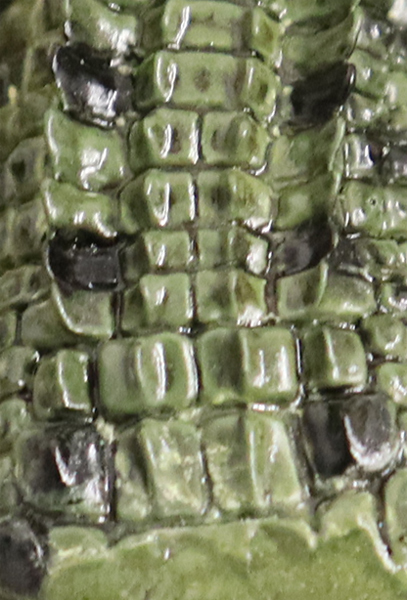
Clever Customers
We have posted up a few mystery pics and puzzles over the last few months or so. Our clever customers, fans and followers have been quick to identify the figure featured. This picture puzzle certainly proved more of a challenge. We had a lot of answers identifying that this was a picture of a crocodilian, but which model?
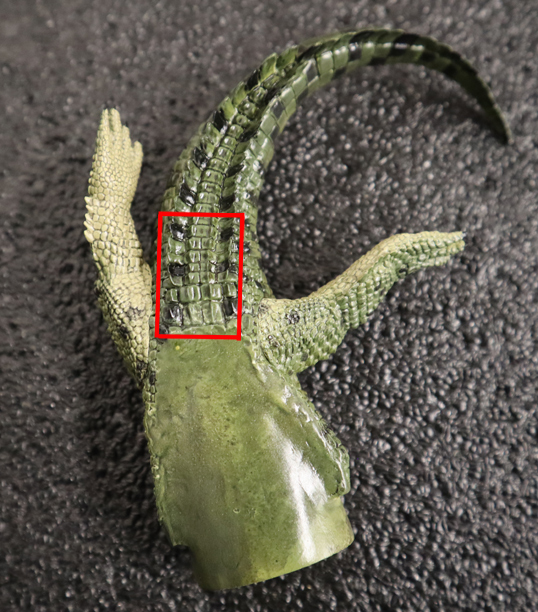
The Green Crocodilian Prey from Rebor Titanoboa Brian Diccus
Many of our clever customers and social media followers correctly guessed that this was the green crocodilian prey from the recently introduced Rebor Titanoboa Museum Class Maquette Brian Diccus. Fossils of Titanoboa (T. cerrejonensis), the largest snake known to science, come from the open cast Cerrejón mine in Columbia (Cerrejón Formation). Several genera of crocodyliforms have been described from fossils from the same strata as Titanoboa.
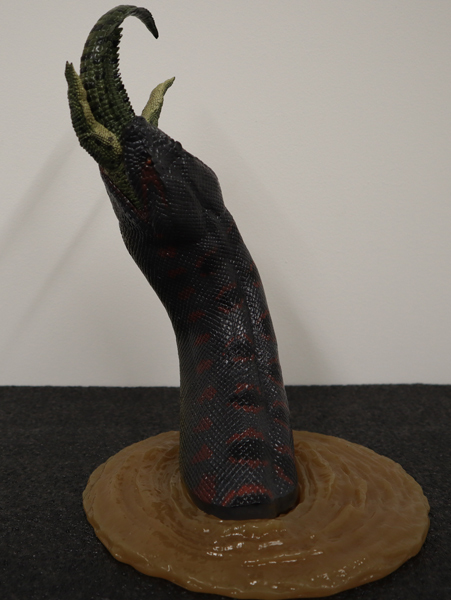
Which Crocodile?
The Rebor Titanoboa Museum Class Maquette Brian Diccus has a declared scale of 1:11. Team members measured the crocodilian prey model and estimated its length to be around 15 cm, which suggests a body length of 1.65 metres at this scale. As this is the posterior portion of the crocodile, we estimate that this figure suggests a total length of over 3 metres and the unfortunate victim of the giant snake could be Anthracosuchus (A. balrogus), a member of the Dyrosauridae family of crocodyliforms named and described in 2014.
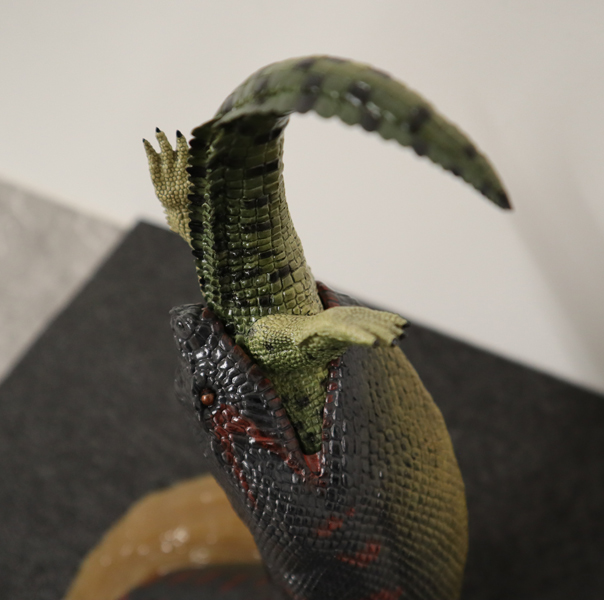
The absence of the anterior portion of the figure in the Rebor composition makes genus identification difficult, but when Anthracosuchus was described, it was speculated that this crocodile was an apex predator and it would have eaten juvenile Titanoboas. In turn, adult Titanoboas could have preyed upon small, immature members of the Anthracosuchus population.
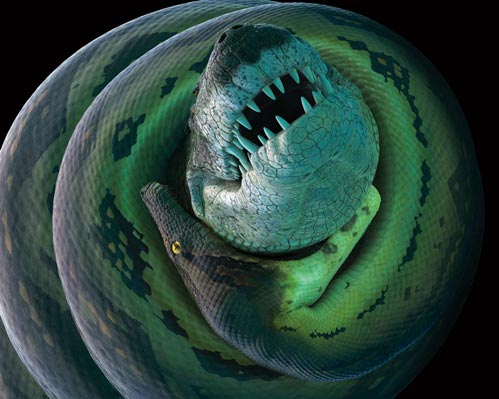
To read the Everything Dinosaur blog post about the discovery of Titanoboa: Titanoboa – Giant Snake from the Palaeocene
Everything Dinosaur’s blog post about the scientific description of Anthracosuchus: Anthracosuchus balrogus Giant Palaeocene Crocodile.
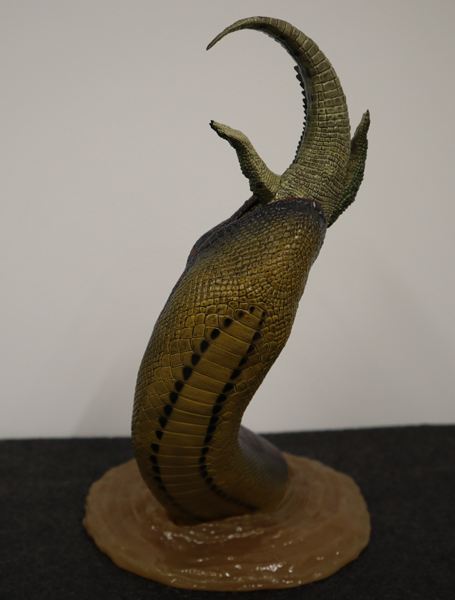
A spokesperson from Everything Dinosaur commented:
“We have been very impressed by the in-depth knowledge of prehistoric animal figures that has been demonstrated. We thought that this was going to be a tough picture puzzle to solve, but as always our customers and social media followers rose to the challenge”.
To view the range of Rebor models and figures available from Everything Dinosaur: Rebor Prehistoric Animal Models.

